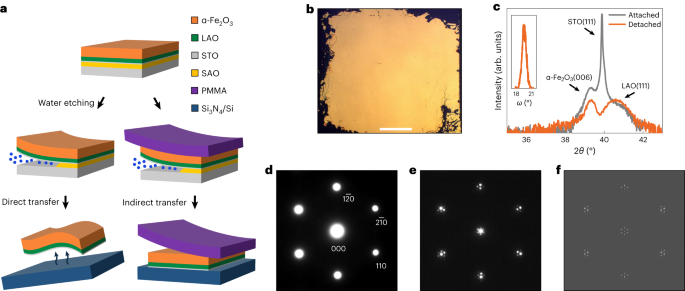Phys.org February 20, 2024
Antiferromagnets hosting real-space topological textures are promising platforms to model fundamental ultrafast phenomena and explore spintronics. However, as they are epitaxially fabricated on specific symmetry-matched substrates, preserving their intrinsic magneto-crystalline order, curtails their integration with dissimilar supports, restricting the scope of fundamental and applied investigations. An international team of researchers (UK, Switzerland, Singapore) circumvented this limitation by designing detachable crystalline antiferromagnetic nanomembranes of α-Fe2O3. They showed that flat nanomembranes host a spin-reorientation transition and rich topological phenomenology. They demonstrated the reconfiguration of antiferromagnetic states across three-dimensional membrane folds resulting from flexure-induced strains. They combined these developments using a controlled manipulator and realized the strain-driven non-thermal generation of topological textures at room temperature. The integration of such free-standing antiferromagnetic layers with flat/curved nanostructures could enable spin texture designs via magnetoelastic/geometric effects in the quasi-static and dynamical regimes, opening new explorations into curvilinear antiferromagnetism and unconventional computing… read more. Open Access TECHNICAL ARTICLE

Membrane design and characterization. Credit: Nature Materials, February 19 (2024)